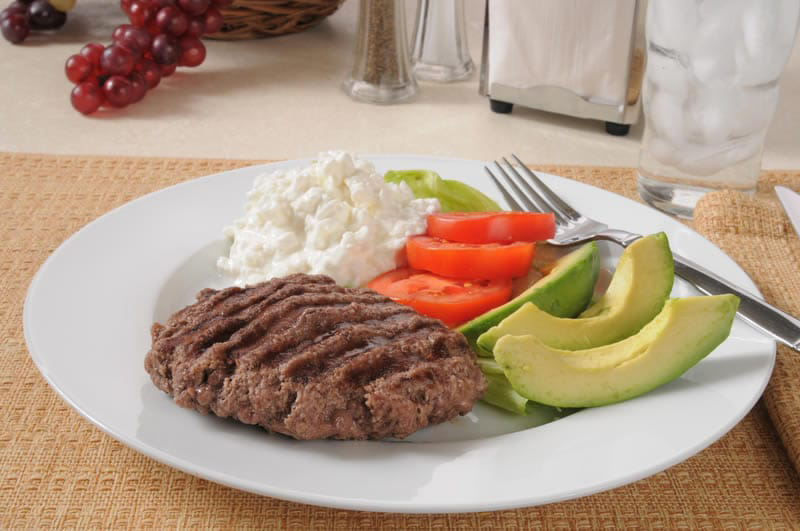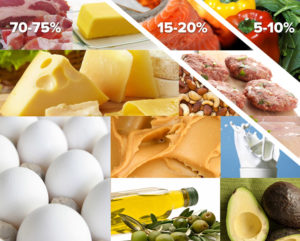Exploiting Physiology: Scientists Jumping into Keto
Ketogenic, ketones and ketosis seem to be buzzwords in the health world lately. The majority of people I know or know of who are diehard “ketogenic-ers” (ketogenisists? I like making up words) are professional athletes, so I wasn’t sure it would be feasible for someone whose job isn’t 24/7 fitness to implement it into their lifestyle. Recently, however, many of my scientist friends and colleagues have adopted the ketogenic diet and have had success with weight loss, increased energy and overall better health.

What I used to imagine all keto fans looked like.
If you’re new to the diet, or have just decided to go all in, here is information you need to be successful:
The Sciencey Stuff: The ketogenic (or ketosis) diet was designed in 1924 by Dr. Russell Wilder at the Mayo Clinic to treat epilepsy. So it turns out this isn’t a new thing. However, it’s use for weight loss and optimal health is a relatively new thing. While the diet has been used to help with both neurological diseases and athletic performance, it’s use for weight loss or overall wellness is still controversial.
The point of the ketogenic diet is to reduce glucose levels and improve insulin resistance by putting the body into a state of ketosis with a high fat, low carb diet. With reduced carbohydrate stores, the liver converts fats into fatty acids and ketone bodies. Ketones can then be processed into ATP, which is the energy currency of the cells. Many people experience weight loss because the body is using fat for energy.
Catherine Saenz explains how the diet works (and cites studies on why it works at the bottom of her article if you want to delve deeper):
Ketogenic diets are very high-fat, moderate-protein, carbohydrate-restricted diets.The exact breakdown of the diet varies between individuals, but a general profile may reflect 70-75 percent fat, 15-20 percent protein and only 5-10 percent carbohydrate.
Ketogenic diets are not the same as high-protein, carbohydrate-restricted diets. I often hear people use these terms interchangeably, but the diets differ quite a bit in their metabolism. Even when you’ve reduced carbs and bumped up your fat, too much protein can actually be a problem.
When it comes to energy, the body prefers to break down fats or carbohydrates for fuel and save protein for other processes, like building muscle. The body can only metabolize a certain amount of protein at one time, so when consumed in large quantities, excess protein has the possibility of being converted to energy, a process called gluconeogenesis. For example, protein can be converted to energy during periods of prolonged exercise, or while exercising in a fasted state. In a ketogenic diet, too much protein could blunt any fat-adaptive responses.
Similar to how ingesting carbohydrates can induce an insulin response, too much protein can also trigger a high insulin response. Some people are shocked to hear this, but protein contains insulinogenic amino acids, or amino acids that spur insulin production, so these amino acids induce a higher insulin release.
Insulin is an important hormone in the body needed to maintain optimum health. It’s a key hormone for many metabolic processes. For example, it ensures the necessary cells receive glucose for energy and plays a big role in fat metabolism. However, when insulin is too high, fat metabolism drastically slows down. So, when too much insulin is released at one time—after a very high carbohydrate or protein meal, for example—the body turns to carbohydrate-derived energy as its main source of fuel (glucose), reduces the signal to use fat for energy, and goes into fat storage mode.
Meal planning, prepping and tracking are key for a successful keto lifestyle. Each component can be time-consuming in the beginning of the transition. Here are some helpful resources to help you stay on track:
Meal planning can (and should) be easy. However, a search for “keto diet meal planning” on Pinterest yields an overwhelming number of results (note–many results include a lot of processed foods. Like with any healthy nutrition plan, avoid those when possible). Meal Prep on Fleek has a list of recipes to help get the ball rolling. There are also many sites that offer weekly meal and supplement plans.

Meal preparation often gets a bum rap. Really, who wants to spend their Sunday prepping food when there are brunches to be had (or grants to be written, or friends and family to see, or whatever takes priority on your weekends)?
While it can be frustrating at first, there are resources to help the process go smoothly. Meal Prep Haven, (yes, it’s a thing), offers a guide for meal prep 101. Ultimately, good meal preparation on the front end will save time on the back end, and will prevent spur of the moment fast food binges. *Side note, label makers are your friend when prepping meals.
Tracking macronutrients is about as fun for some people as (insert something not very fun here). However, there are apps for your phone that make it easier. Developers are adding and updating apps frequently, so there should be plenty to choose from in your respective App Store. Picking an app that allows you customize your macros and daily caloric needs is important.
Helpful infographics can be found anywhere on the web, but I’ve gathered a few to help make the switch to keto easier:
Eating out or on the go while following the ketogenic lifestyle
Partaking in alcohol when on the keto diet
Research, planning and consistency are ultimately what makes this lifestyle successful. But you scientists are great at all of that anyway–so keto on!
Oh, yeah, I didn’t go to med school, and this post shouldn’t be viewed as advocacy for this lifestyle. If you have medical issues (especially diabetes), or aren’t sure if this lifestyle is for you, talk to your doctor.
Feel free to share your experience, favorite recipes, etc. with me on Twitter! @BrittenyMWatson







2 Comments
Nice blog, buddy! I am also a freak for pee strips to check and see if you’re doing it right https://www.amazon.com/Nurse-Hatty%C2%AE-IMPROVED-Professional-Ketogenic/dp/B016Z5XZP0/ref=sr_1_3_a_it?ie=UTF8&qid=1508724795&sr=8-3&keywords=ketone+test
YMMV.
I love how excellent your insights were on this blog. Keep it up!